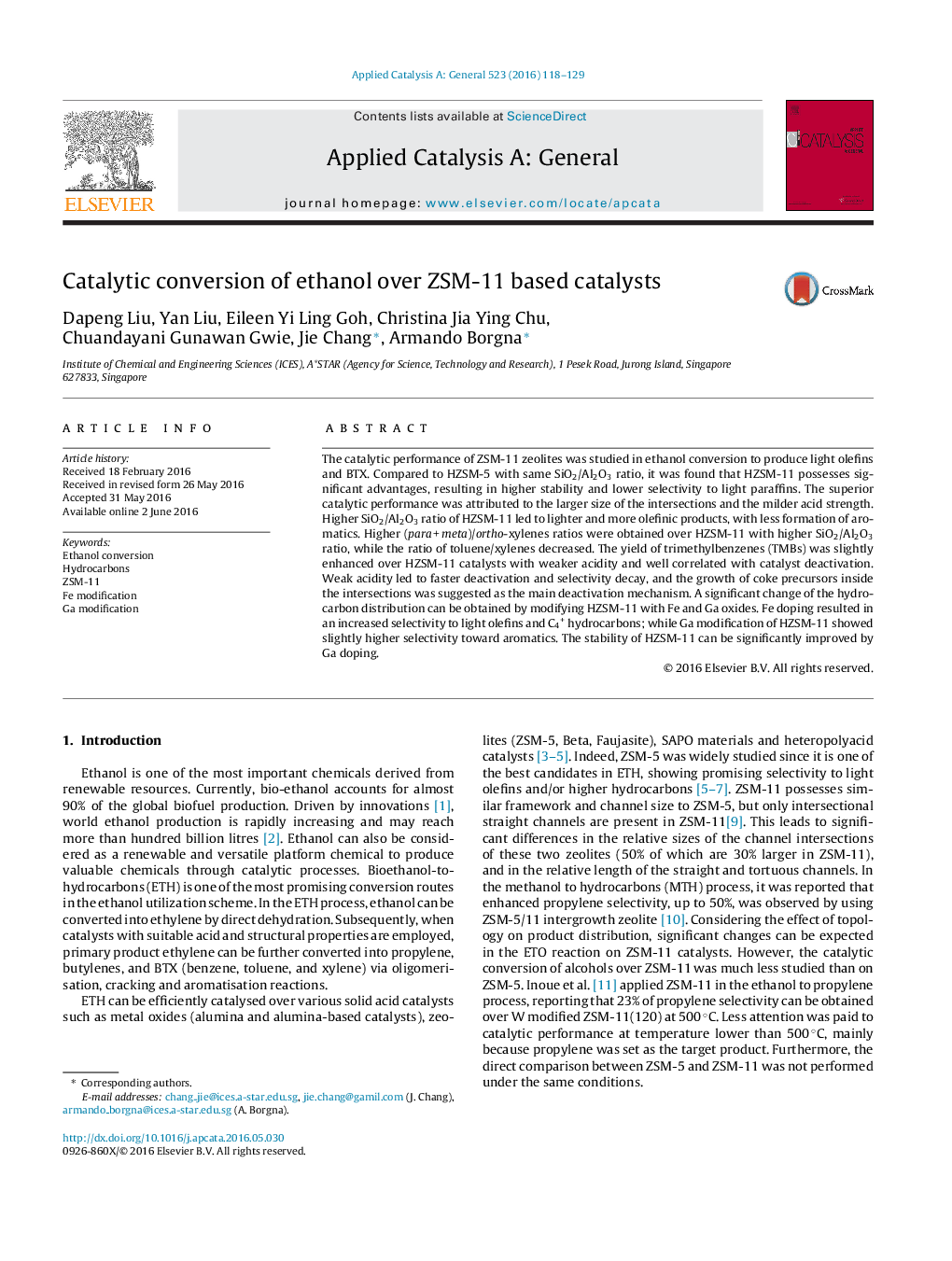| Article ID | Journal | Published Year | Pages | File Type |
|---|---|---|---|---|
| 38758 | Applied Catalysis A: General | 2016 | 12 Pages |
•MEL structure provides interesting advantages as compared to ZSM-5 during ethanol conversion.•The superior performance is mainly ascribed to the larger intersection spaces in ZSM-11.•Fe promotion leads to a promising catalyst for light olefins.•Ga promotion results in an improvement on stability, along with a slight increase of aromatics.
The catalytic performance of ZSM-11 zeolites was studied in ethanol conversion to produce light olefins and BTX. Compared to HZSM-5 with same SiO2/Al2O3 ratio, it was found that HZSM-11 possesses significant advantages, resulting in higher stability and lower selectivity to light paraffins. The superior catalytic performance was attributed to the larger size of the intersections and the milder acid strength. Higher SiO2/Al2O3 ratio of HZSM-11 led to lighter and more olefinic products, with less formation of aromatics. Higher (para + meta)/ortho-xylenes ratios were obtained over HZSM-11 with higher SiO2/Al2O3 ratio, while the ratio of toluene/xylenes decreased. The yield of trimethylbenzenes (TMBs) was slightly enhanced over HZSM-11 catalysts with weaker acidity and well correlated with catalyst deactivation. Weak acidity led to faster deactivation and selectivity decay, and the growth of coke precursors inside the intersections was suggested as the main deactivation mechanism. A significant change of the hydrocarbon distribution can be obtained by modifying HZSM-11 with Fe and Ga oxides. Fe doping resulted in an increased selectivity to light olefins and C4+ hydrocarbons; while Ga modification of HZSM-11 showed slightly higher selectivity toward aromatics. The stability of HZSM-11 can be significantly improved by Ga doping.
Graphical abstractWith larger size of intersections, ZSM-11 provides superior catalytic performance in ethanol-to-hydrocarbon (ETH) conversion than ZSM-5. Higher values of the activation energy for diffusion-controlled reactions are observed over ZSM-11, facilitating the subsequent conversion of primary ethylene into more valuable products such as propylene and BTX. In addition, the milder acidity of ZSM-11, compared to ZSM-5 with same SiO2/Al2O3 ratio, leads to lower H-transfer and cracking reaction rates than those on ZSM-5, minimising the formation of low value light paraffins. Ga promotion results in enhanced selectivity to value-added hydrocarbons and improved stability.Figure optionsDownload full-size imageDownload high-quality image (167 K)Download as PowerPoint slide
